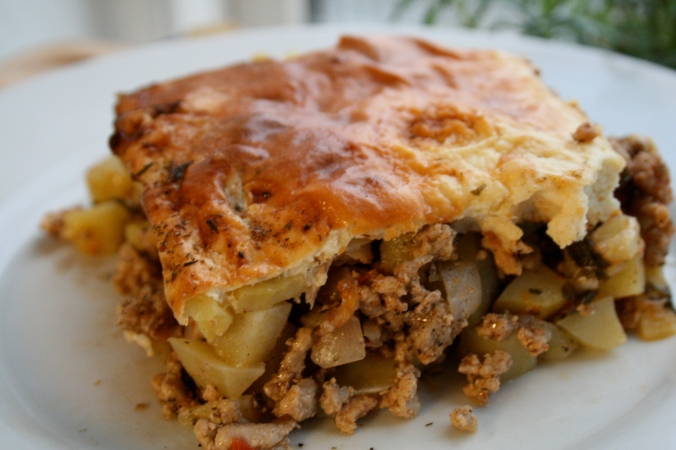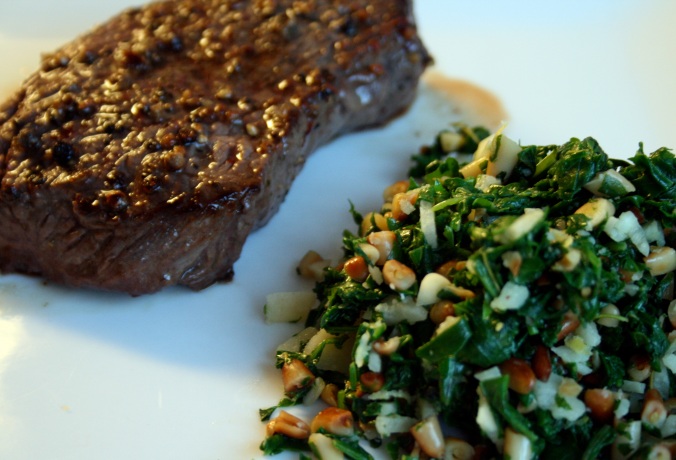
Pasties are one of my cooking favourites. They can be eaten warm or cold and can be filled with nearly anything. They are not only nice for vegetables or pizza-fillings, but are also ideal for leftovers from the day before and work as an edible and delicious lunch-box.
Pastry Dough
500 grams flour
250 grams butter
150 ml milk
1 teaspoon salt
Making Vegetable and Meat Pasties
Mix the salt and flour together and rub in the warm butter until the mixture has the consistency of bread crumbs. Add the milk and combine to a dough. Work the dough shortly to make sure the ingredients are well combined, form it into a round shape and chill it in the fridge for a half hour. You can leave the dough in the fridge over night, but keep in mind that the dough becomes very hard because of the butter and is more difficult to roll out.
Take the dough out of the fridge and roll it out on a lightly floured surface. Try to roll it out as flat as you can without tearing it apart. It should be about 3-5 mm thick, otherwise the pasties can get quite doughy. Cut the dough into squares (about 15×15 cm), put a bit of the filling into one of the corners of the squares and fold the other corner over, so that you get a triangular pasty. You can brush the edges of the square with some water, milk or beaten egg to make the dough stick. Make sure the pasties are sealed and add them to a baking sheet. Cut a cross shaped hole into the top of the pasties like you see on the picture to release some of the pressure that builds up during the baking. Bake the pasties in a 180°C preheated oven for 30 minutes on the middle shelf. If you use two baking sheets, make sure to change the top and bottom sheet after 15 minutes so that they get browned evenly.
Vegetable filling
1/2 courgette
1 green pepper
8 champignons
4 tomatoes
3 carrots
1 onion
2 cloves of garlic
1 teaspoon fresh thyme
1/3 teaspoon fresh oregano
1/3 teaspoon fresh basil
1/3 teaspoon fresh rosemary
Salt and pepper
Creme fraiche
Grated cheese
Chop all the vegetables into relatively small pieces and press the garlic through a garlic press. Fry the chopped carrots, onion and garlic in a frying pan until they all got a bit of colour, then add the other vegetables and chopped spices together with plenty of salt and pepper. Fry the mix shortly, then take it off the heat and add it together with 2 teaspoons of creme fraiche and 2 teaspoons of grated cheese onto the pasties.
Meat filling
Meet and vegetables leftover from Homemade Tacos
Grated cheese
Creme Fraiche
For this batch of pasties I used vegetables, cheese, creme fraiche and taco meet from the Homemade Tacos. They also made lovely Mexican style pasties.
Generally pasties are useful for any kind of filling as long as it is not too dry. Just get creative with your own pasties!
If you like it, why not share it?




